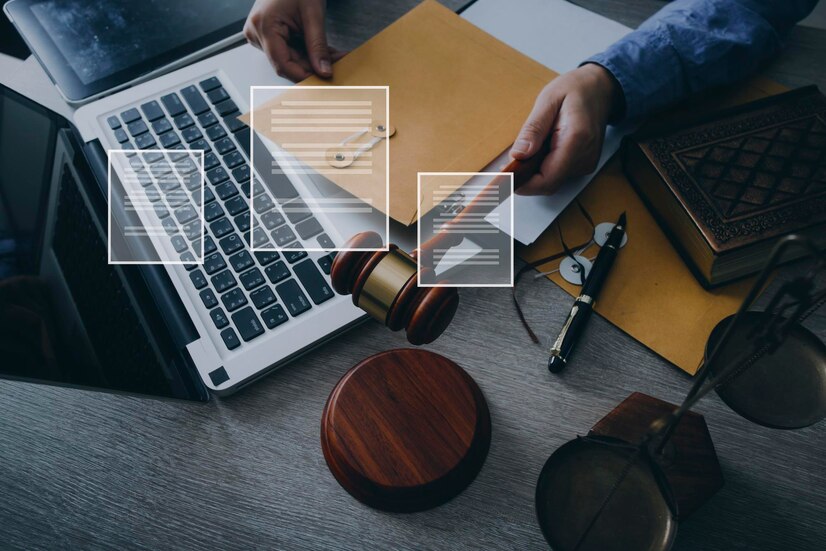How Long Does A Title IX Investigation Usually Take From Start To Finish?

Understanding the timeline of a Title IX investigation is crucial for several reasons. For those involved, whether as complainants, respondents, or administrators, the duration of the investigation can have significant personal, academic, and professional ramifications.
The purpose of this article is to shed light on the often complex and misunderstood process of a Title IX investigation. We will delve into the typical stages of these investigations, factors that influence their duration, and what participants can expect throughout the process.
Understanding Title IX
This federal law was enacted as part of a broader push toward gender equality, particularly in education and athletics.
The purpose of Title IX was to address and remedy the systemic sex-based discrimination present in educational institutions. Before its enactment, women and girls faced significant barriers to accessing equal educational opportunities, particularly in higher education and athletics.
Title IX sought to ensure that all individuals, regardless of their sex, have equal access to educational programs, resources, and opportunities. A swift and fair process is essential for the well-being of all parties and the integrity of educational institutions.
For students and staff, prolonged investigations can lead to prolonged uncertainty and stress, impacting their educational or work environment.
Explanation Of What Constitutes A Title IX Violation
A Title IX violation occurs when an individual experiences discrimination based on sex in an educational program or activity that receives federal funding. This discrimination can take many forms, including but not limited to:
-
Sexual Harassment and Violence:
This incorporates undesired sexual advances, asking for sexual favors, and such kinds of physical or verbal conduct. Title IX covers severe, pervasive, and objectively offensive conduct that denies a person equal educational access.
-
Athletic Inequality:
Unequal treatment of men and women in athletic programs, including disparities in funding, facilities, training, equipment, and opportunities.
-
Admissions and Recruitment:
Discrimination in admissions processes or recruitment strategies based on sex.
-
Educational Opportunities and Scholarships:
Denying or limiting access to educational opportunities and scholarships based on sex.
-
Employment Discrimination:
This pertains to discrimination in hiring, pay, or promotion practices within educational institutions based on sex.
Title IX violations extend beyond these examples, encompassing any form of sex-based discrimination that impedes equal access to educational benefits and opportunities.
Over the years, Title IX has evolved, with guidance and amendments expanding its scope to address emerging issues and interpretations around gender identity and sexual orientation, ensuring a broader umbrella of protection under this pivotal civil rights law.
The Title IX Investigation Process
The Title IX investigation process is a critical mechanism for addressing allegations of sex-based discrimination in educational institutions receiving federal funding. This process is designed to be thorough, impartial, and fair, providing a framework for addressing complaints in a manner that respects the rights of all involved parties.
The process aims to ascertain the facts of the case, determine if a violation of Title IX occurred, and implement appropriate remedies or disciplinary actions if necessary.
Key Stages of the Investigation Process:
-
Complaint Filing:
The process begins when a complaint alleging a Title IX violation is filed. This can be done by the victim, a witness, or any individual who becomes aware of a potential violation. The complaint is usually filed with the institution’s Title IX coordinator.
-
Initial Assessment:
Upon receiving a complaint, the Title IX coordinator conducts an initial assessment to determine whether the allegations, if true, would constitute a violation of Title IX. This stage involves a preliminary review of the complaint and may include meetings with the complainant to understand the nature and context of the allegations.
-
Formal Investigation:
If the coordinator determines that the complaint warrants further inquiry, a formal investigation is launched. This phase is more comprehensive and involves gathering evidence, interviewing witnesses, and allowing both the complainant and respondent to present their sides of the story. The investigator collects all relevant information to make an informed decision about the case.
-
Resolution:
After the investigation, the investigator or a designated decision-maker evaluates the evidence and makes a determination based on a “preponderance of the evidence” standard – whether it is more likely than not that a Title IX violation occurred. Following this determination, appropriate actions, which may include disciplinary measures, are taken. Both parties are informed of the outcome and have the right to appeal the decision under certain circumstances.
Role Of Title IX Coordinators And Investigators
Title IX Coordinators play a central role in managing the institution’s response to Title IX complaints. They oversee the investigation process, ensure compliance with Title IX regulations, and provide resources and support to those involved in the process. Coordinators also engage in preventive education and training programs within the institution.
Investigators gather facts, interview parties, and witnesses, and compile a comprehensive report. Their role is fact-finding and analysis rather than adjudication.
The investigation process under Title IX stands as a fundamental element in maintaining fairness and safety within educational settings. This structured protocol is essential for tackling significant issues of sex-based discrimination, safeguarding the right of every individual to an educational experience devoid of harassment and discrimination.
Factors Affecting The Timeline
A range of critical factors can influence the length of time a Title IX investigation takes. Being aware of these contributing elements is key to forming accurate expectations regarding the investigation’s timeframe. Here are the main factors that can determine the duration of a Title IX investigation:
-
Complexity of the Case:
The nature and intricacy of the allegations play a significant role in determining the length of the investigation. Cases involving multiple incidents or parties, or those with intricate circumstances, typically require more time to investigate thoroughly. Conversely, more straightforward cases with clear-cut issues may be resolved more swiftly.
-
Availability of Evidence and Witnesses:
The ease with which evidence can be gathered and the availability of key witnesses can greatly impact the timeline. Investigations necessitate collecting documents, electronic communications, and other forms of evidence, as well as conducting interviews with all relevant parties. Delays in accessing this information or scheduling interviews with witnesses can extend the duration of the investigation.
-
Institutional Policies and Procedures:
The specific policies and procedures of the educational institution conducting the investigation also affect the timeline. Different institutions have varying protocols for handling Title IX investigations, including differing standards for review and resolution processes. These internal guidelines can either expedite or prolong the investigative process.
-
Legal Challenges of Appeals:
In some cases, legal challenges or appeals by the parties involved can introduce delays. Suppose either the complainant or respondent contests the findings or the process. In that case, additional time may be needed to address these challenges, which can include formal appeals processes or, in some instances, legal action outside the institution.
Each of these factors contributes to the overall timeline of a Title IX investigation, making it a process that can vary widely in duration. It is essential for all parties involved to be aware of these variables and to understand that while expediency is important, thoroughness and fairness are paramount in achieving just outcomes.
Average Timeline Of Investigations
The timeline of a Title IX investigation can be quite variable, but understanding the average duration can provide a general expectation for those involved. The timeframe for each investigation depends on the specific circumstances of the case, the complexity of the issues at hand, and the efficiency of the investigative process. However, some general patterns and averages have been observed across various institutions.
What To Expect At The End Of The Investigation?
In summarizing the key findings about the timelines of Title IX investigations, it’s clear that these processes are inherently variable. While the average duration of an investigation typically ranges from a few months to a year, numerous factors such as case complexity, evidence and witness availability, institutional policies, and potential legal challenges can influence this timeframe.
Initial assessments, formal investigations, decision-making, and potential appeals each contribute to the overall length of the process. The importance of timely and fair Title IX investigations cannot be overstated. While expedience is desirable, it should never come at the expense of thoroughness or fairness.
The primary objective of these investigations is to ensure a just outcome, respecting the rights of all involved parties and maintaining the integrity of educational institutions. A balanced approach that values both efficiency and meticulousness is crucial for upholding the principles of equity and safety in educational environments.
The Bottom Line
Ultimately, Title IX investigations are more than procedural steps; they are critical tools in fostering and maintaining equitable educational spaces free from sex-based discrimination.
As such, understanding and respecting the variable nature of these investigation timelines is essential in ensuring the right justice in every case. This eventually reassures the commitment to equality and fairness at the heart of Title IX.
Additional:













